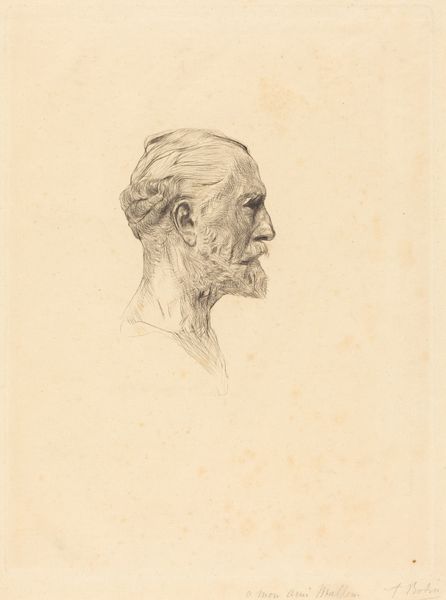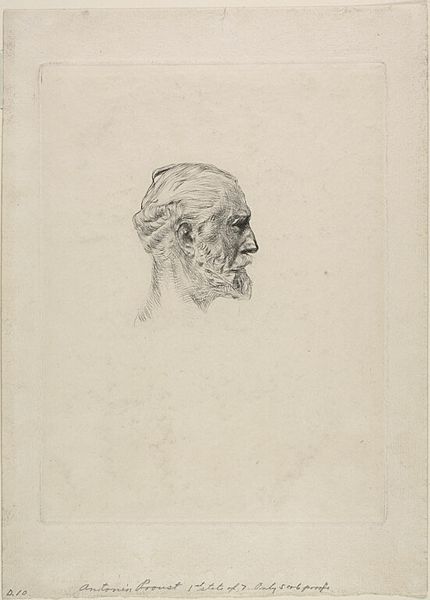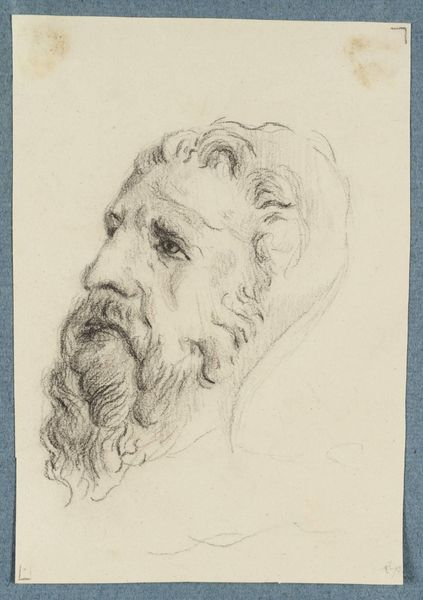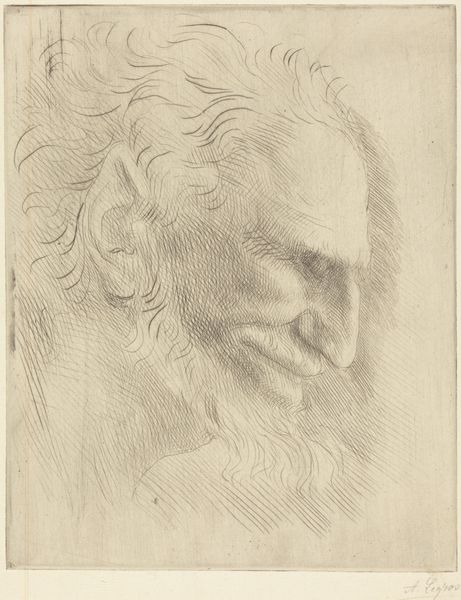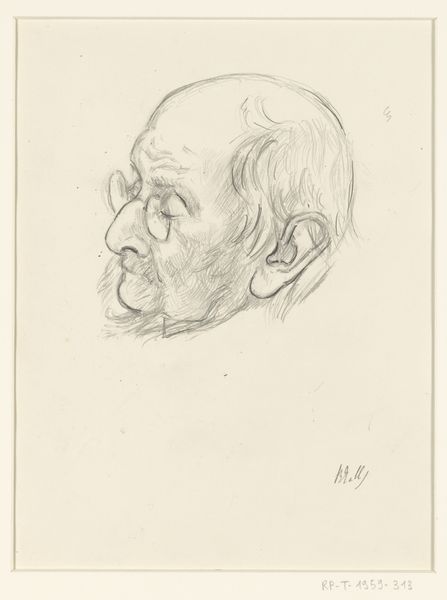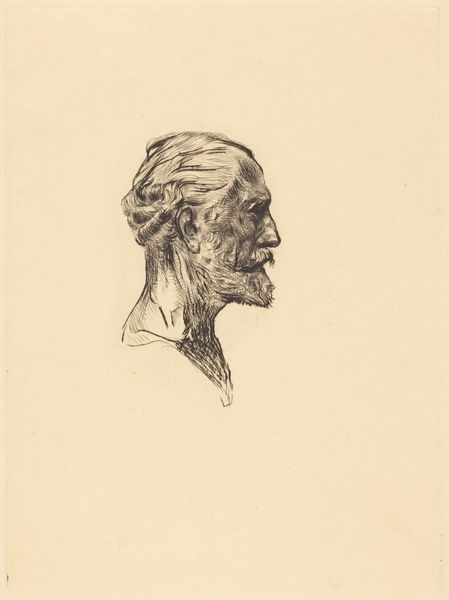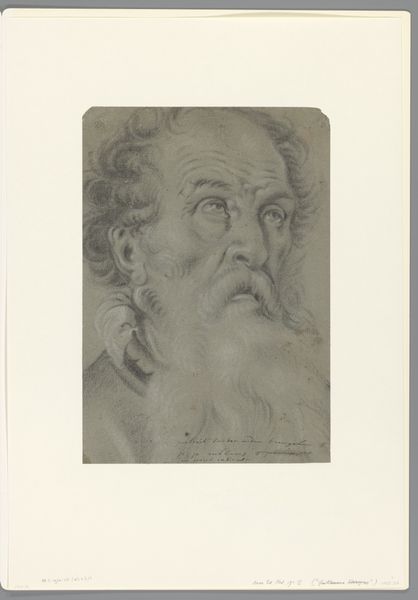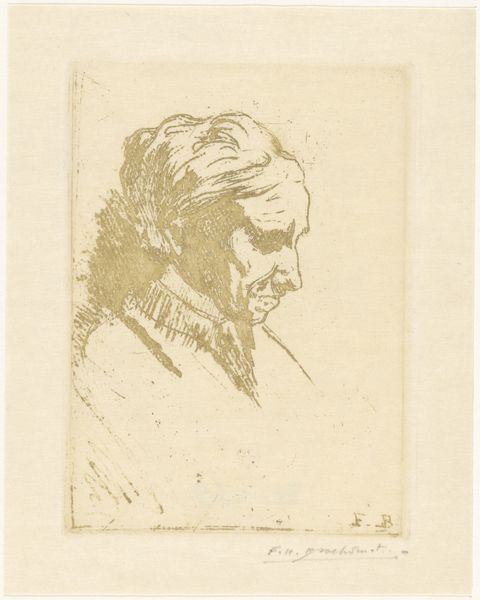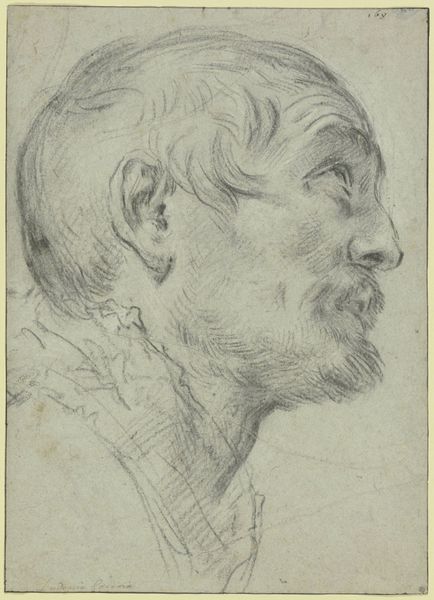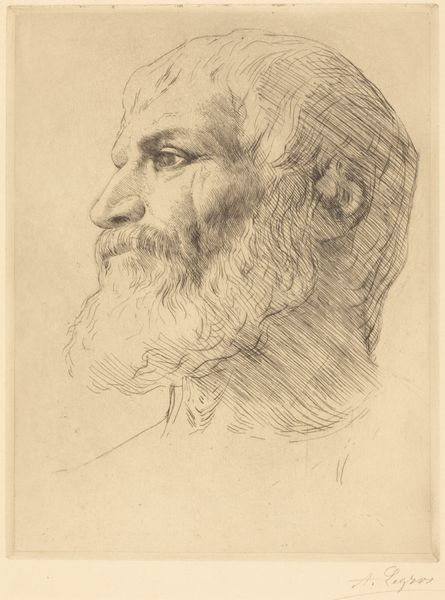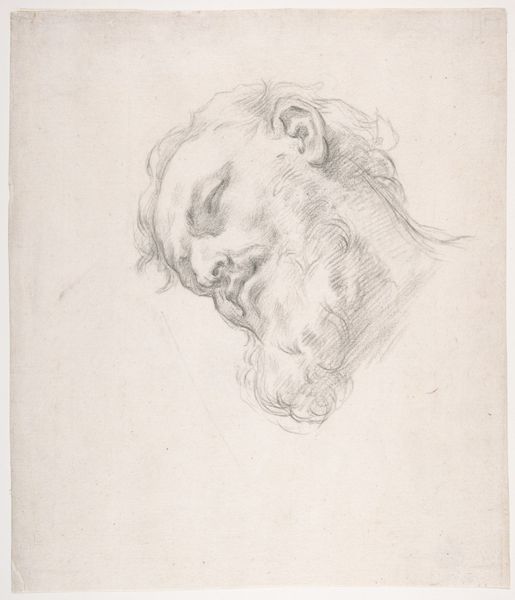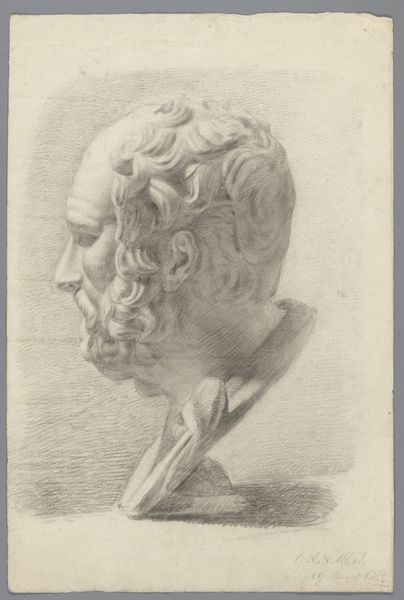
drawing, pencil
#
portrait
#
drawing
#
classical-realism
#
pencil
#
academic-art
Dimensions: height 447 mm, width 340 mm
Copyright: Rijks Museum: Open Domain
Curator: Looking at this artwork, my first thought is that it's intense; a study, certainly, but there's a weight to the gaze of that sculpted head. Almost confrontational. Editor: Well, precisely! We are gazing into the lineage of thought. Here, around 1818-1900, Gerard Allebé has sketched, with striking economy, a classic sculpted head. Notice how the light seems to cling to the brow, deepening those furrows... it's a map of the mind! Curator: A mind forever frozen, I suppose. It's hauntingly beautiful, but I also feel a pang of...well, not sadness, exactly. Perhaps, nostalgia. What's gone is really gone, or we have the symbol of what's gone and can only hint to that bygone era. Editor: And yet, so present! Those defined lines and shading - look closely. Allebé has masterfully captured the texture of the stone, or the idea of that texture, lending this two-dimensional drawing almost palpable physicality. Think about it – this "classical head" is itself a symbol, right? It’s standing in for something larger, a whole worldview really. Curator: Symbolism stacked upon symbolism, endlessly mirroring back upon itself. The gaze of a reproduction is still something worthy of capturing. It speaks of human endeavor to create likeness through art, and of human intellect seeking after lost knowledge through a reproduction's symbolism. So cool! Editor: Consider the context; within the academy, this head becomes a stand-in for discipline, rigor, and the ideals of classical aesthetics—beauty, truth, order. The pencil becomes the interpreter of the "divine"—in the older sense of order, lawfulness in the cosmos. The head is "perfect," to be perfectly translated to page. Curator: That academic tradition sometimes feels almost like a prison to modern sensibilities, though. All those rules! How do you, you know, break free and just *feel* something in the moment with this, without becoming overly serious? I almost feel that it's mocking something through hyperrealism, although not obviously on the face of it. Editor: Yes, but there can be liberation *in* discipline, just as much as the burden of strictures. Seeing those lines so beautifully rendered—that dedication in service of...well, *something* other than the mundane, perhaps, but the spirit is tangible. And maybe that’s what makes it continue to resonate, to feel so vital even now. Curator: Maybe. It invites pondering about meaning making as a discipline, and that can’t be all bad! It's interesting that Allebé chose to work just with pencil and paper. Perhaps, he would argue the best translation can only be brought about by limitation? Editor: A compelling idea. Yes, to distill the essence through constraint—pencil on paper, the perfect vessel to speak with this art. Perhaps even its muse? Curator: Well, however perfect or imperfect, I won't forget that face soon.
Comments
No comments
Be the first to comment and join the conversation on the ultimate creative platform.

